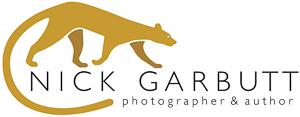Photography Equipment
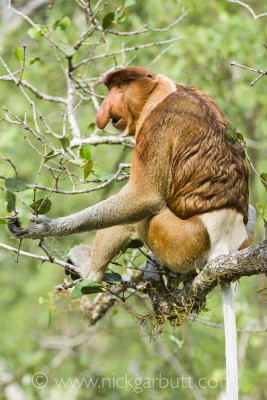
A male Proboscis Monkey in Bako NP, Sarawak. Sadly, my first forays into wildlife photography in Bako in 1988 did not produce results like this.
Getting Started
I began taking photos on a university expedition after graduation in 1988. On way out to Borneo, I read 'an idiot's pocket guide to 35mm photography', did not really understand too much of it and spent the next three months taking awful photos of proboscis monkeys and other wildlife in Bako National Park.
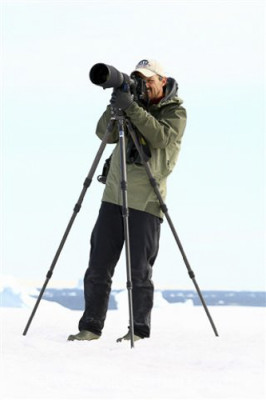
While hand-holding is required in some instances, a good tripod remains crucial for most situations, if you want consistent sharp images.
Those initial forays were with borrowed equipment: my grandparents' Olympus OM10, a couple of lenses and a rickety matchstick-legged tripod. But I was hooked and so saved up to to buy my own camera: a Nikon F301 and I have been using Nikons ever since.
All my early gear was bought secondhand, and this remains a valid alternative today. My favourite film camera was the Nikon FE2 (I had two). Back in the days of film, lenses were the most important component with respect to final image quality, so I invested more heavily in them than I did in the latest specification camera body.
With the advent of digital technology that dynamic has changed. Lenses obviously remain pivotal to image quality, but camera bodies are now equally important as they contain the digital sensor that records the image. The frustration now is that as technology moves on, so cameras and sensors etc improve and previous generation models quickly become dated. However, I would still advocate considering buying a second hand body, providing it is only one generation behind the state of the art. Preceding models are often available for considerable savings and for the money you're able to spend, you may get a specification of camera well above the equivalent priced latest model.
Cameras and Lenses
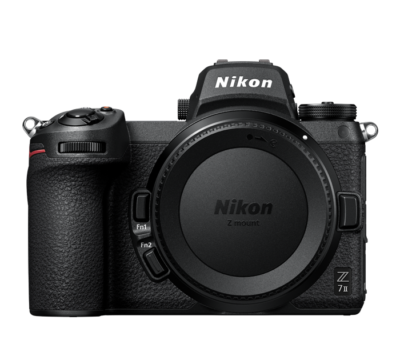
My first foray into mirrorless technology. Compared to DSLR's and its predecessor (Z7), the Z7ii boasts significant improvements in AF across the entire frame, plus a host of other advantages. I really like the auto focus-stacking feature.
I'm not one of those photographers who bangs on about how good the cameras I use are, as compared to those made by other manufacturers. Always remember cameras don't take pictures, photographers do. Obviously, good equipment helps, but even the most expensive cameras don't walk out and take photos on their own (although they should, given their astronomical price tags). Whichever brand of camera you use, good photographic approach and technique is far more important.
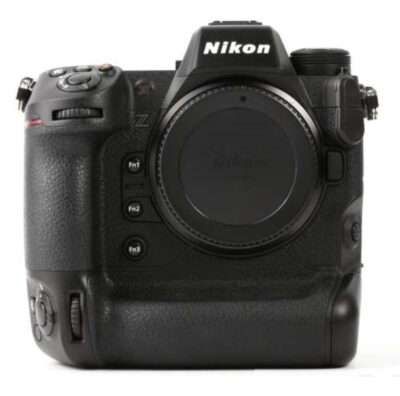
Nikon's flagship mirrorless camera - the Z9 sports high resolution, super fast and accurate autofocus and very rapid firing rates. It is spectacular camera for wildlife.
Having said that, if you are starting out, or starting afresh, remember when you buy a camera body, you are buying into a broader system of equipment - lenses, flashguns and other accessories, so I would let this influence your choice. There is little point in buying something now, that might back you into a cul-de-sac further down the line. In my book this effectively means you look no further than Nikon, Canon, Sony or Olympus camera systems if you are serious.
I initially bought a Nikon because they were renowned for being robust and able to take the knocks. Old Nikons were built like brick s**t houses. And this holds true today. Modern digital cameras are way more sophisticated and contain a far greater amount of delicate bits and pieces than old film cameras ever did, but my Nikons still feel chunky and dependable in my hands and have rarely let me down, even though I do have a tendency to abuse them from time to time.
Which conveniently brings me to a tangential point. Remember cameras are tools to do a job. So yes, they need care, servicing and looking after in the field, but this does not mean they should be wrapped in cotton wool and molly-coddled. Good wildlife photo opportunities often present themselves suddenly and quickly, then in an instant are gone. This is especially true on vehicle-based trips like safaris in East or Southern Africa. If your kit is always tucked away in a bag, the moment will have passed by the time you take your camera out and are ready.
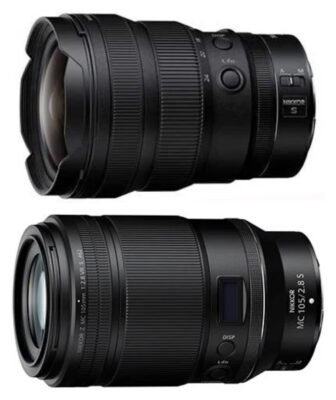
Two of my favourite lenses. The Z Nikon 14-24mm (top) is a close focusing wide angle ideal in the tight confines of rainforest environments. Whilst the Z MC 105mm (bottom) is my 'standard' macro lens: its fast f2.8 maximum aperture offer considerable scope for creating images with lots of diffuse, out-of-focus areas. Used in conjunction with techniques like focus-stacking to emphasise detail in the subject, this can be very powerful.
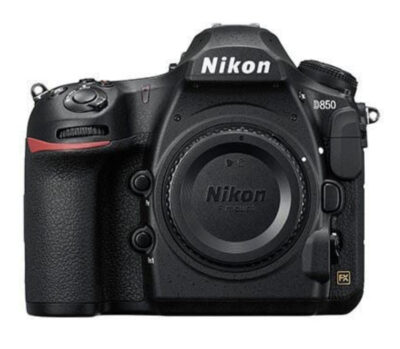
The D850 remains an outstanding camera. It's now my one remaining DSLR and is used with some older F-mount lenses and as a back up body.
I would stress that never does all this go away with me on a trip at the same time (if it did I would need a Sherpa and a deep pocket to pay the excess luggage fees). Instead, I tailor what I take to the destination / location and the likely situations and subjects I aim to photograph.
I always travel with three camera bodies. Firstly, different models have different strengths and I, therefore, tailor when and how I use each of them. And secondly, as a back up in case a body fails or has an accident.
Lens choice is especially relevant to destination / location. On African safaris (or other vehicle based trips), a tour to the Pantanal, a trip to Ladakh in search of snow leopards or photographing pumas in Torres del Paine long telephoto lenses dominate, and I carry a 800mm and 400mm as standard. They are both fast lenses, so large and relatively heavy (although the newer S models are now considerably lighter). Sometimes trips involve flights on small planes with severe luggage / weight restrictions and I am forced to leave both these lenses at home and replace them with the 'one-size-fits-all' (almost) 100-400mm, and the amazing 500mm PF, both of which are lighter and more compact. While this is a slight compromise, which I hate, it is a necessity and something that cannot be avoided.
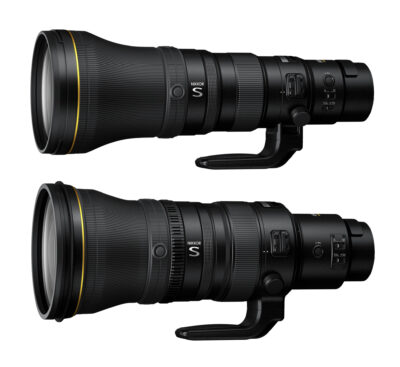
My two super-telephotos: in combination, the Z 400mm TC f2.8 with built in 1.4x teleconverter and Z 800mm PF f6.3, provide a range of focal length options and considerable versatility. Both are super fast focusing and incredibly sharp.
Alternatively, when visiting my favourite habitats - tropical rainforests - my kit bag is dominated by smaller lenses - macros (105mm, 15mm macro, 24mm probe macro), wideangles (14-24mm) and a fisheye (8-15mm) and accompanying flash equipment.
Here is a list of the major items I use at the moment.
Camera Bodies
• Nikon Z9 - My main wildlife action camera. Incredible AF tracking, rapid fire and high resolution in one package. Movie options are ground-breaking too. What's not to adore?
• Nikon Z7ii - My principle macro, habitat and landscape camera. Good high ISO results. Movie options are significant improvements.
• Nikon D850 - very good AF, excellent resolution, dynamic range and good high ISO capabilities.
• Nikon D2X - Converted to infra-red - a bit of fun - but can be great for B&W under certain lighting conditions.
Lenses
• Nikkor Z 800mm f/6.3 PF VR S
• Nikkor Z 400mm f/2.8 TC VR S
• Nikkor 500mm f/5.6E PF ED VR AF-S
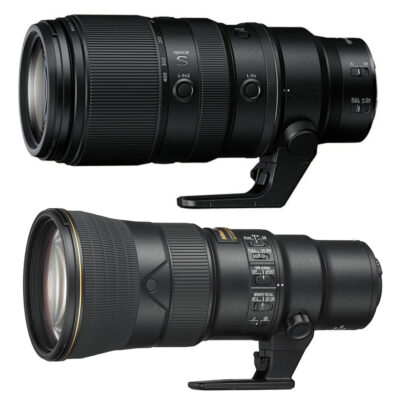
When I have to 'pack light' and reduce the amount of gear I take, I turn to the versatile Z 100-400mm zoom and the fantasticly compact 500mm PF.• Nikkor Z 100-400mm f4.5-5.6 VR S
• Nikkor Z 100-400mm f4.5-5.6 VR S
• Nikkor Z MC 105mm f2.8 VR S
• Nikkor Z 24-120mm f4 VR S
• Nikkor Z 14-24mm f2.8 VR S
• Nikkor 8-15mm f/3.5-4.5 E ED AF-S fisheye
• Sigma 105mm f/1.4 DG HSM Art
• Laowa 15mm f/4 wide-angle macro
• Laowa 25mm f/2.8 5 x ultra macro
• Laowa 24mm f14 probe macro
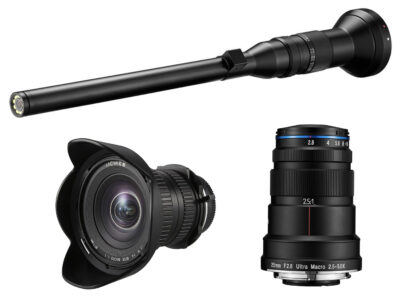
Three innovative macro lenses by Venus Optics (Laowa) provide me with a plethora of close-up possibilities. Top, the 24mm probe-macro for an extreme 'bug-eye' perspective of small subjects. Left, 15mm wide-angle macro close-ups of small to medium size subjects whilst also showing their environment. Right 25mm ultra-macro for up to 5x magnification and extreme close-up detail.
Flash & Lighting
Having used various Nikon speedlights for many years, I have now changed to the Godox flash system, primarily because it is far more versatile and considerably less expensive than Nikon. The major functional advantage of the Godox system is that all the flash units (camera speedlights and studio flashes) can be radio triggered by using a small (and modestly priced) control unit mounted on the camera hot shoe, which is both easy and intuitive to use.
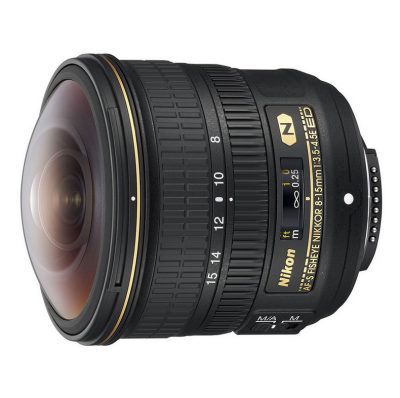
A variation on the wideangle: this 8-15mm fisheye excels at showing subjects in the context of their environment.
Having radio control and trigger capability offers many significant advantages. It makes using off-camera flash easy, as there is no longer a need for dedicated TTL cords limit the distance the flash can be taken off the camera. It also means that no 'line of sight' is required between control unit and flash unit(s) (which is a limiting factor with infra-red trigger systems), so the flash or flashes can be placed anywhere. And creative multi-flash scenarios using two or more flash units can be set up, with each unit controlled independently, even in different modes.
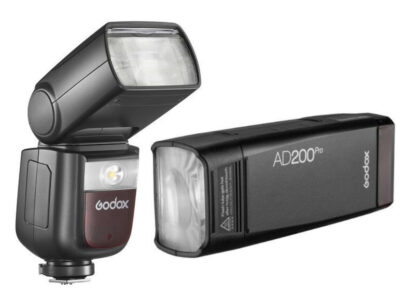
Both the Godox V860III and Godox AD 200 Pro can be controlled by radio trigger, crucial for effective multi-flash photography.
• Godox V860 III speedlights x 2 & Godox AD 200 Pro flash x 2
• Meike MT24s macro twin lite flash
• Godox LED 170 & 126 video lights
Other Accessories
• Lastolite Ezybox 2 soft box, Lastolite micro apollo soft boxes, various home made flash diffusers
• MagMod beamer
• Novoflex Castel M macro focus rail
• Kase Wolverine magnetic circular polariser and ND filters
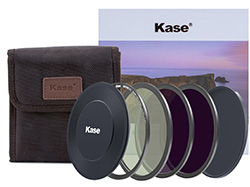 When using flash, it is often also necessary to modify the light in some way to make it look more realistic and natural. This generally means diffusing or 'softening' the light and it is especially important with macro photography and other close-confine scenarios. Unmodified light direct from a flash unit is harsh and creates deep shadows and bright highlights which are generally very distracting and detrimental to images. Over the years, I have tried a number of commercially available soft boxes that work reasonably well to varying degrees, but I have also experimented with numerous home-made contraptions and methods, especially with my macro set ups. These are constantly being tweaked and refined.
When using flash, it is often also necessary to modify the light in some way to make it look more realistic and natural. This generally means diffusing or 'softening' the light and it is especially important with macro photography and other close-confine scenarios. Unmodified light direct from a flash unit is harsh and creates deep shadows and bright highlights which are generally very distracting and detrimental to images. Over the years, I have tried a number of commercially available soft boxes that work reasonably well to varying degrees, but I have also experimented with numerous home-made contraptions and methods, especially with my macro set ups. These are constantly being tweaked and refined.
I tend to use filters sparingly, but there are times when they are necessary to get the best results or achieve certain affects. I use circular polarising filters to reduce reflections, cut out glare from water and help saturate colours. Neutral density filters are sometimes used to deliberately reduce light to achieve very slow shutter speeds. I have recently started using the Kase Wolverine magnetic system which is compact, versatile and easy to use and much less 'fiddly' than systems involving screw-in holders and slide-in filters. I have a set of 112mm filters, that fit my Nikon 14-24mm lens and with step rings any other lenses with smaller diameter screw-in threads. Because they are magnetic, two or more filters can be stacked together to augment their effect.
Camera Support
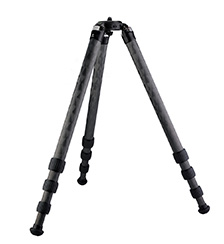
A good sturdy tripod is always recommended and essential for all non-vehicle based photography. I have two RRS Versa series 3, with 4 leg sections. This is the 34L version with longer legs
After camera and lens this is THE most important item of equipment. In fact I would say it is equally important. There are no short cuts here. If you are serious about photography you NEED a good tripod. The match-stick-legged types (like the one I took to Borneo many years ago) simply do not cut it. They could not hold a packet of crisps steady on a calm day, let alone a weighty camera and lens combination when it is breezy. There is no point what so ever buying a decent camera and lenses, then attaching them to something flimsy. Firstly, it simply will not do the job it is meant too i.e. hold the camera firm and steady. And secondly, there is a strong chance of disaster with the thing toppling over and causing major damage to your camera etc.
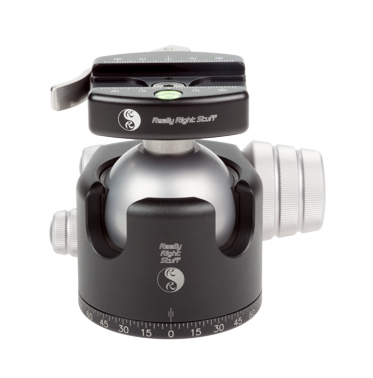
A good tripod head is worth its weight in gold: I have always preferred ball-and-socket tripod heads as they provide maximum maneuverability and ease of use. My choice is the RRS BH 55 with a quick release clamp.
If you have (or intend getting) reasonably heavy equipment - say a camera plus a 70-200mm f/2.8 lens or larger - then I would recommend a tripod with screw-lock legs, rather than the alternative snap fixtures. Snap fixtures may seem quicker and easier to use, but over time there is a tendency for them to weaken and then a danger of dreaded 'leg sag', with consequential expensive disasters.
Similar consideration should be given to the tripod head and the way your camera / lens attaches to this. Again too many options in high street stores are poor and will ultimately lead to frustration.
![]() I am a devotee of tripods and support equipment made by the American company Really Right Stuff. I have used their gear for many years. First and foremost it does the job it is designed to do - it holds my cameras and lenses rock-solid. It is beautifully built, and as tough as it gets, almost to the point of being 'over-engineered'. Secondly, the attention to detail is excellent and with so many of their bits of kit every angle is considered, potential issues predicted and solutions found.
I am a devotee of tripods and support equipment made by the American company Really Right Stuff. I have used their gear for many years. First and foremost it does the job it is designed to do - it holds my cameras and lenses rock-solid. It is beautifully built, and as tough as it gets, almost to the point of being 'over-engineered'. Secondly, the attention to detail is excellent and with so many of their bits of kit every angle is considered, potential issues predicted and solutions found.
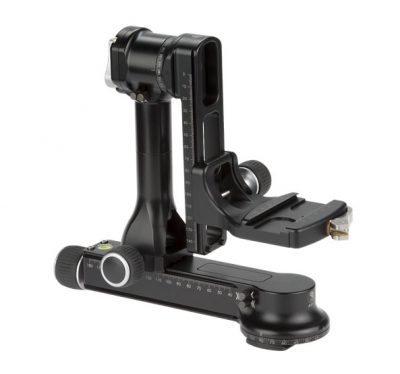
RRS Fluid Gimbal Head
Their carbon fibre tripods are the best I have used - light in weight, but chunky in feel and with excellent non-slip screw locking legs. Their ball-and-socket heads are silk-smooth and capable of holding even the largest of camera / lens combinations and they are all built around the ARCA-style attachment system. When using my largest, heaviest telephoto lens (600mm f4) I now prefer the RRS fluid gimbal head with cradle. It is a heavy piece of kit, but the stability and versatility it provides is exceptional. Really Right Stuff also make all the appropriate camera and lens plates to match and I have fitted my camera bodies and larger lenses with these.
This is what I use the majority of the time
• Tripods - Really Right Stuff TVC-34L & TVC-34: Versa series 3, 4 sections, long legs & Versa series 3, 4 sections
• Ball and Socket head - Really Right Stuff BH-55 LR with quick-release clamp
• Gimbal Head - Really Right Stuff FG-02: full gimbal head with cradle clamp
• Fluid Video Head - Really Right Stuff FH-350: fully dampened, silky smooth
Memory Cards & Storage

Delkin Black CF express cards have very fast write speeds and appear reliable.
Today's cameras (especially top end mirrorless models) require memory cards with the ability to accept and store very large amounts of data quickly. Cameras, like the Nikon Z9 (or Canon R5 and Sony A1) that take images at 20+ frames a second and also are able to record video at 4K or 8K, require memory cards with very fast continuous 'write speeds' (an indication on how quickly data can be written to the card). Some cards are able to accept data at fast values initially, but then their performance begins to tail off quickly. This means during a sustained continuous burst of shooting frame rates would begin to slow and the cameras performance would be compromised.
I use Delkin Black CF express cards (type B), that have sustained write speeds (i.e. they don't slow down) of up to 1725 MB/s, which means I can shoot over 80 frames in high quality RAW before the card begins to 'buffer' and the frame rate slows. If shooting in high quality JPEG (not that I ever do), the card never buffers.
Card capacity is also important. I have a combination of 150GB and 325GB cards. In my Z9 (45MP), the 150GB card holds 1700 RAW files, while the 325GB card stores 3600 RAW images. However, when shooting video (which is massively data hungry) recording times are alarmingly short. The 150GB card can record just 20 minutes (4K, Pro Res 422), while this increases to 42 minutes with the 325GB card (4K, Pro Res 422). For additional capacity when shooting video, a 650GB Delkin Black is available, but it it £800!
During trips, I download my images and videos on a daily basis (where possible) and store the files on Sandisk Extreme SSDs. I carry four 4TB drives, one for image files and one for video files, with each of these being duplicated as a backup.
Camera Bags and Cases
There is no such thing as the ideal or perfect camera bag. Over the years I have tried dozens of combinations of ways of transporting and carrying my gear. My loft contains numerous discarded and obsolete variations. But I have now been using the same photo backpack for several years and additionally Peli cases of various sizes.
My favourite back pack is the Gura Gear Bataflae 32L (32 litre). I particularly like the 'butterfly' opening mechanism and the neat way the straps tuck away. Sadly production stopped several years ago and this model is no longer available. A very similar model, the G32, was subsequently released under the Tamrac brand, but this is no longer available new either. The nearest equivalent now is the slightly less voluminous, Gura Gear Kiboko V2 30L.
On most foreign trips, I cannot carry all the required gear in a single back pack, so I also use a Pelicase that is checked into the aircraft hold. The combination of equipment I use, of course, depends on the destination and likely photographic subjects and scenarios anticipated. I generally try to pack the most important / most valuable equipment in my back pack with less crucial lenses and accessories in the Pelicase.
Most international flights are now a bit easier than they were a few years ago, with many airlines adopting a 2-pieces of check-in luggage policy (or one piece included with the ticket and the extra piece chargeable at a flat fee). However, on trips that involve flights on small planes, the often very tight luggage restrictions remain problematic and I have to cut back on my choice of gear considerably (I once left all my regular kit and clothes at an airport in Africa and flew to a bush camp with only my essential camera gear, a tooth brush and one additional pair of underpants for a week).
On safaris in Africa, and other similar trips, where most photography is from a vehicle e.g. the Pantanal, the Gura Gear back pack is packed with two camera bodies, the 400mm f2.8 TC and the 800mm f6.3 PF. In addition, I use a small Peli-case (1500) for a couple of other smaller lenses (100-400mm, 14-24mm and a 1.4x teleconverter) and peripherals.
To most other destinations, especially rainforest locations like Borneo, Ecuador, Peru and Costa Rica, where considerably more varied photographic situations are likely to be encountered and there is the need for a greater variety and amount of kit, then I again use the Gura Gear back back but his time loaded up with three camera bodies, the 400mm f2.8 TC and a couple of smaller lenses. I then use a larger Pelicase, either a 1560 or 1600 Air to carry the remaining gear, including the 800mm, several macro lenses and my flash gear, which is then checked in with my regular luggage. My tripod is wrapped in a fleece and buried inside my regular duffle bags with my clothes etc.
Binoculars
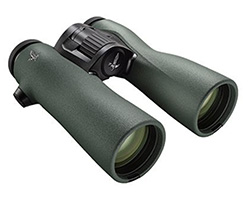
My new Swarovski NL Pure 10x42's, are very 'comfortable' to hold and use and optically are second to none.
A final word. A reasonable pair of binoculars is absolutely invaluable on any wildlife watching trip. Always choose the best you can afford. There is little point in spending several thousand pounds on a wildlife holiday and having a cheap pair of binoculars that make seeing the wildlife difficult. Where optical equipment is concerned, you get what you pay for.
For many years my first choice has been Swarovski - I now use a pair of NL Pure 10x42's that are optically brilliant and gather light in gloomy conditions amazingly well. Looking through them in the dark recesses of a rainforest almost looks brighter than when looking with the naked eye. They are also incredibly comfortable 'in the hand' during use.
I also carry a back-up pair - Swarovski EL 8x32 - which are more compact and lighter and are also optically excellent.
And one last bit of advice.
COUPLES - please do not bring one pair of binoculars between you with the intention of sharing. IT DOES NOT WORK and only leads to frustration and ultimately missing out on sightings.
